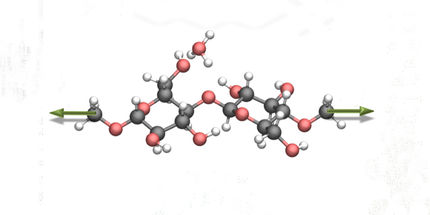A "switch" to increase starch accumulation in algae
A brighter future for renewable energy and materials
Results from a collaborative study by Tokyo Tech and Tohoku University, Japan, raise prospects for large-scale production of algae-derived starch, a valuable bioresource for biofuels and other renewable materials. Such bio-based products have the potential to replace fossil fuels and contribute to the development of sustainable systems and societies.
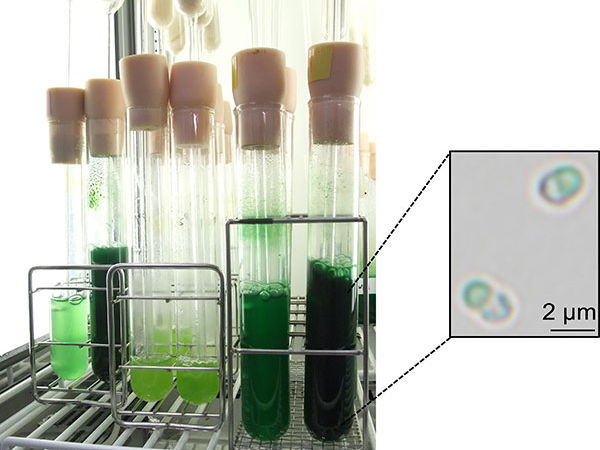
Cultivation of the unicellular red alga C. merolae in the laboratory
Tokyo Tech
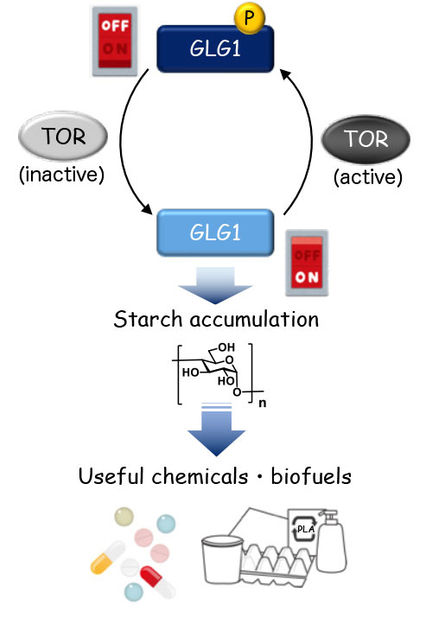
Representation of the "switch" controlling starch accumulation
Tokyo Tech
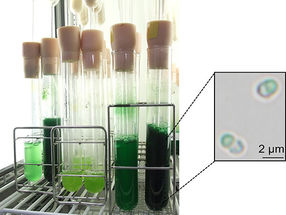
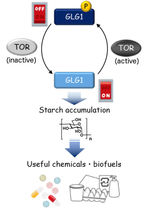
A "switch" controlling the level of starch content in algae has been discovered by a research team led by Sousuke Imamura at the Laboratory for Chemistry and Life Science, Institute of Innovative Research, Tokyo Tech.
The study focused on the unicellular red alga Cyanidioschyzon merolae. The researchers demonstrated that starch content could be dramatically increased in C. merolae through inactivation of TOR (target of rapamycin), a protein kinase known to play an important role in cell growth.
They observed a notable increase in the level of starch 12 hours after inactivation of TOR through exposure to rapamycin, and this led to a remarkable ten-fold increase after 48 hours.
Importantly, the study details a mechanism underlying this profound increase in starch content. Using a method called liquid chromatography-tandem mass spectrometry (LC-MS/MS), the researchers examined subtle changes in the structure of more than 50 proteins that might be involved in "switching on" the process of starch accumulation. As a result, they pinpointed GLG1 as a key protein of interest. GLG1 acts in a similar way to glycogenin, an enzyme found in yeast and animal cells, which is known to be involved in the initiation of starch (or glycogen) synthesis.
The mechanism will be of immense interest to a wide range of industries seeking to scale up biofuel and value-added biochemicals production.
For example, the findings could accelerate the production of environmentally friendly fuel additives, pharmaceuticals, cosmetics, and bioplastics that are now in high demand with the phasing out of single-use plastic bags and straws in many parts of the world.
Algae, compared with land plants, are very appealing due to their high photosynthetic productivity and relative ease of cultivation. Starch, triacylglycerols (TAGs) and other algal biomass constituents are increasingly viewed as a promising and powerful way to contribute to the Sustainable Development Goals (SDGs) outlined by the United Nations.
The research team notes that more studies using other algal species, as well as higher plants such as Arabidopsis thaliana, could yield further information about the fundamental molecular mechanisms behind starch accumulation. "This information will help to develop technologies to improve starch biosynthesis productivity and concomitantly improve sustainable biomass and bioenergy production," Imamura says.
Original publication
Original publication
Imran Pancha, Hiroki Shima, Nahoko Higashitani, Kazuhiko Igarashi, Atsushi Higashitani, Kan Tanaka, Sousuke Imamura; "Target of rapamycin (TOR) signaling modulates starch accumulation via glycogenin phosphorylation status in the unicellular red alga Cyanidioschyzon merolae"; Plant Journal; 2018
Topics
Organizations
Other news from the department science
These products might interest you

BRC - Berghof Reactor Controller by Berghof
BRC - complete package for data acquisition, storage and control of all process parameters
Touch controllers are easy to use and provide quick access to all important functions

Berghof Reaktortechnologie - Hoch- und Niederdruckreaktoren, Druckbehälter und metallfreie Reaktoren by Berghof
Safe high- and low-pressure systems for aggressive media
Corrosion-resistant reactors with PTFE lining - individually configurable

Get the chemical industry in your inbox
By submitting this form you agree that LUMITOS AG will send you the newsletter(s) selected above by email. Your data will not be passed on to third parties. Your data will be stored and processed in accordance with our data protection regulations. LUMITOS may contact you by email for the purpose of advertising or market and opinion surveys. You can revoke your consent at any time without giving reasons to LUMITOS AG, Ernst-Augustin-Str. 2, 12489 Berlin, Germany or by e-mail at revoke@lumitos.com with effect for the future. In addition, each email contains a link to unsubscribe from the corresponding newsletter.

